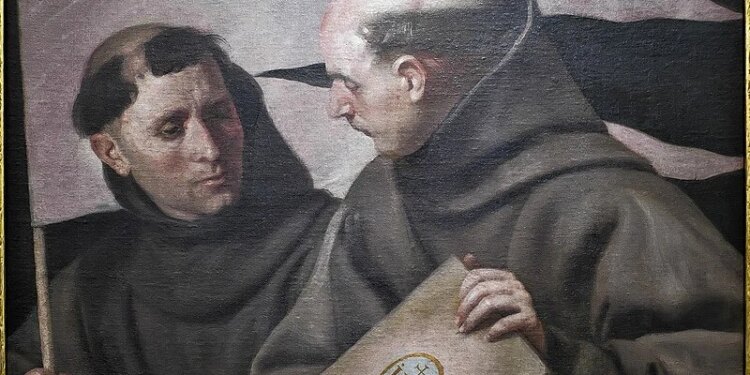CNA Staff, Oct 23, 2024 / 04:00 am
On Oct. 23, the Catholic Church celebrates the life of St. John of Capistrano, a Franciscan priest whose life included a political career, extensive missionary journeys, efforts to reunite separated Eastern Christians with Rome, and a historically important turn at military leadership.
Invoked as a patron of military chaplains, St. John of Capistrano was praised by St. John Paul II — whose feast day was yesterday, Oct. 22 — in a 2002 general audience for his “glorious evangelical witness” and as a priest who “gave himself with great generosity for the salvation of souls.”
Born in Italy in 1385, John lost his father — a French or possibly German knight who had settled in Capistrano — at a young age. John’s mother took care to have him educated, and after learning Latin he went on to study both civil law and Church law in Perugia. An outstanding student, he soon became a prominent public figure and was appointed governor of the city at age 26.
John showed high standards of integrity in his civic career, and in 1416 he labored to end a war that had erupted between Perugia and the prominent House of Malatesta. But when the nobles had John imprisoned, he began to question his life’s direction. Encountering St. Francis of Assisi in a dream, he resolved to embrace poverty, chastity, and obedience with the Franciscans.
Abandoning his possessions and social status, John joined the religious order in October 1416. He found a mentor in St. Bernardine of Siena, known for his bold preaching and his method of prayer focused on the invocation of the name of Jesus. Taking after his teacher in these respects, John began preaching as a deacon in 1420 and was ordained a priest in 1425.
John successfully defended his mentor from a charge of heresy made against his way of devotion, though he found less success in his efforts to resolve internal controversy among the followers of St. Francis. A succession of popes entrusted important matters to John, including the effort to reunite Eastern and Western Christendom at the Ecumenical Council of Florence.
Drawing immense crowds in his missionary travels throughout Italy, John also found success as a preacher in Central Europe, where he opposed the Hussites’ error regarding the nature and administration of the Eucharist. After Constantinople fell to Turkish invaders in 1453, Pope Nicholas V sent John on a mission to rally other European leaders in defense of their lands.
Nicholas’ successor Pope Callixtus III was even more eager to see the Christian world defend itself against the invading forces. When Sultan Mehmet II sought to extend his territorial gains into Serbia and Hungary, John joined the celebrated general Janos Hunyadi in his defense of Belgrade. The priest personally led a section of the army in its historic victory on Aug. 6, 1456.
Neither John nor the general, however, would survive long past the battle.
Weakened by the campaign against the Turks, Hunyadi became sick and died soon after the victory at Belgrade. John survived to preach Hunyadi’s funeral sermon, but his own extraordinary life came to an end after a painful illness on Oct. 23, 1456. St. John of Capistrano was canonized in 1724.
This story was first published on Oct. 21, 2012, and has been updated.
Credit: Source link



